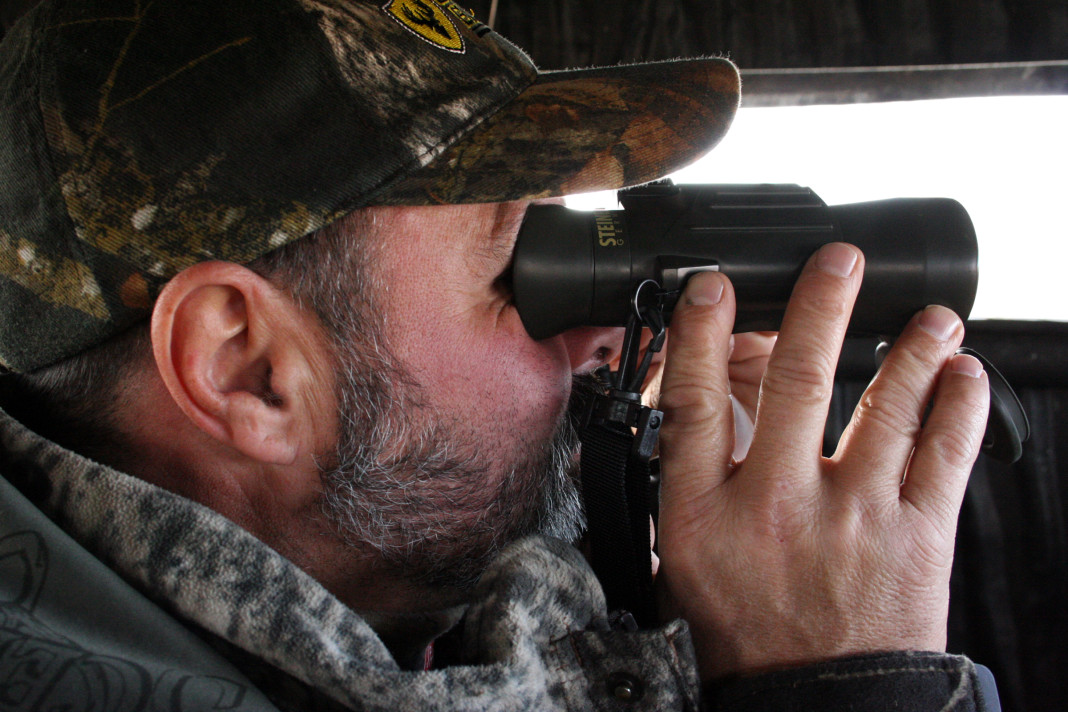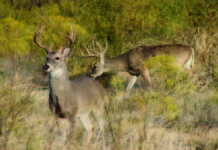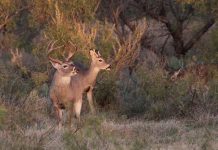Whether you’re a hunter, birdwatcher or sports fan, the optics world can be a little confusing. Binoculars come in all shapes, sizes, colors and prices, but knowing what type to buy can be tricky.
Summer is the time to figure out what you need in advance of fall hunting seasons, especially if you’re looking to invest in upgraded optics and need to start beating the bushes to find what suits you best for the best price. However, there’s also really never a bad time to upgrade your glass, even during the height of Texas fall hunting seasons.
Every optics maker has adopted the motto that smaller is better, which has become easier with a number of advances in technology. While companies continue to manufacture large models, they also have gone to smaller, sleeker designs that have many of the same amenities.
When looking at a pair of binoculars, there are certain terms to understand.
Binoculars utilize prism systems that deliver the image to the eye. One type, the porro prism, has offset barrels that make the optics heavier and bulkier than the second type, the roof prism. Roof prism optics have straight barrels with the eye pieces situated directly at their ends.
The main difference, besides the way an image is transferred through the two binoculars is the cost. Roof prism binoculars generally are more expensive because it costs more to manufacture them to attain the same optical quality as porro prisms.
Power or magnification is how much closer an object appears in the lens than when seen with the naked eye. It’s the first number of two that describes a binocular. A pair of 10×50 binoculars would make an object look 10 times closer than with the naked eye. The objective lens is the front lens on the binocular. It is the second number describing a pair of optics, represented in millimeters. The larger the objective lens, the more light generally can enter it.
The field of view is the size of the viewing window in a pair of binoculars. It typically is measured in feet at 1,000 yards.
As a binocular’s power increases, the field of view is narrowed and vice versa, and higher magnification means the binocular is using more power to focus on a smaller area.
The exit pupil refers to the size of the light shaft that is transmitted to the eye. The exit pupil figure can be found by dividing the size of the objective lens by the magnification power. That value is measured in millimeters. The larger the exit pupil value, the brighter an image will look.
Eye relief refers to the space between the eye and the binocular eyepiece. An extended eye relief makes it easier for those wearing glasses to use a pair of binoculars. Many companies have made eye cups that have the ability to extend or go flatter.
Some binoculars have a variable power, meaning they can be dialed up higher. As before, the higher these models are dialed, the more the brightness, clarity and field of view will decrease.
Besides having the most durable, resilient materials, today’s optics incorporate features that would have astounded many people even a few decades ago.
One optics breakthrough that have gained notoriety are range-finders. Companies have taken a technology that was bulky in past years and turned it into an easy-to-operate piece of equipment that will tell its user exactly how far away an object is. Using a send-and-receive feature, a range-finder is great if you’re eyeing a long shot and don’t know how far it really is.
You’ll find almost every bowhunter on TV and on hunting videos packing a range-finder, which can mean the difference between a perfect shot and a clean miss.
Another superb feature on some of today’s optics is image-stabilization that utilizes a microcomputer in the optics themselves to take the shake and roll factor out of the equation. Little gyros account for movement when a user is holding the binoculars and they offset even the slightest deviation from level. These especially are vital in marine environments when the rocking and swaying of a boat can make zeroing in on a location impossible without the technological upgrade.
Yet another piece of optics equipment that has become commonplace in many hunting backpacks is the spotting scope. A spotting scope resembles a telescope though it is smaller and less powerful. Spotting scopes have become a necessity for some hunters and guides who hunt animals that prefer high altitudes or canyon-type habitats.
Many hunting guides who hunt various types of sheep and elk often will use binoculars to identify if an animal is a ram or bull and then break out the spotting scope to get the animal’s horn dimensions.
Spotting scopes come in different price ranges, and like any other optics equipment, the quality of the lenses and internal components is the main differentiation. A cheaper spotting scope works fine for pretty much anything anyone would need one for, but the higher-end models carry high-quality glass and usually finer adjustment mechanisms.
One of the greatest optics advancements is the trail camera. They aren’t really optics but the sensors and lenses in them are now on par with some of the best point-and-shoot cameras you’ll find. They can be set up in a variety of locales and rigged to shoot photos and video at almost every interval imaginable, capturing game that often would go undetected.
The best way to find what works best for you is to simply try out as many products as you can that fit your specifications. It’s still July, but heading online or to your nearest sporting goods retailer will have you hankering for deer season before you know it, which is never a bad thing.






















